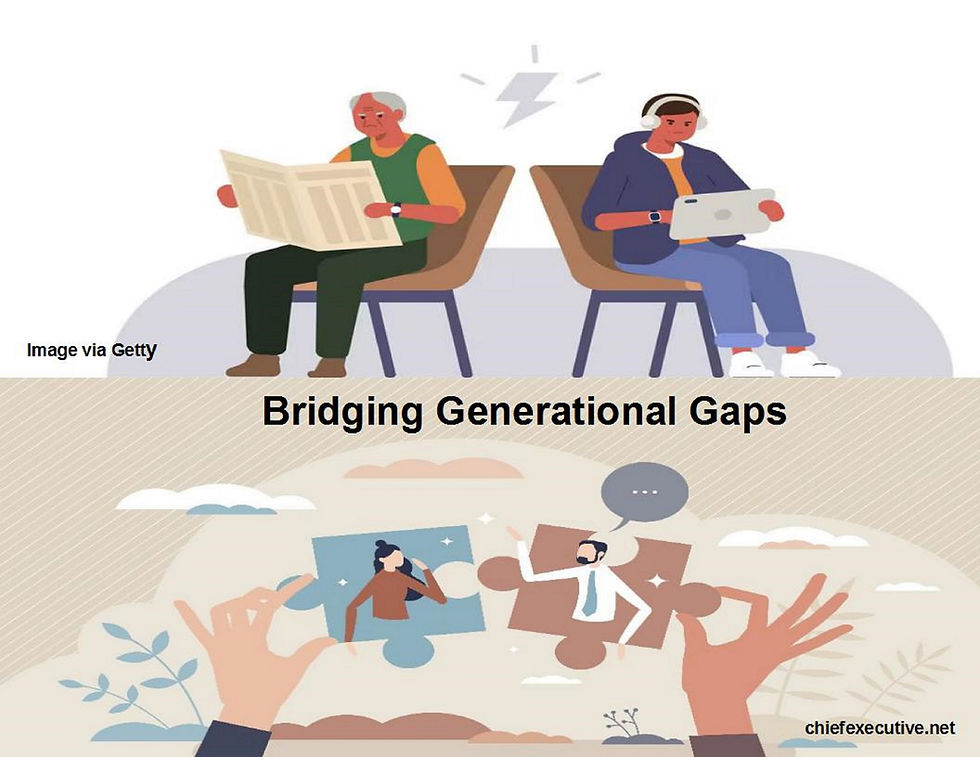How Government Technology Can Bridge Generational Workforce Gaps
- Ken Larson

- Jun 13, 2024
- 3 min read

“FEDERAL TIMES” By Robert Edelman
“While tools may bridge the physical gap, fostering a culture of knowledge sharing can take teams a step further to connect multiple generations.
This can be achieved through mentorship programs where workers unaccustomed to using new technology are paired with those well-versed in tech use, to facilitate mutual learning“
________________________________________________________________________________
“The federal workforce is undergoing a significant shift as technology becomes more advanced and older Americans stay employed longer than ever before.
As baby boomers near retirement, Gen Xers solidify leadership roles, millennials take on supervisory positions, and some of Gen Z enters the workforce for the first time, this diverse mix of generations presents a unique set of challenges when it comes to technology adoption within federal agencies.
Coupling Innovation with Security
Given the nature of their position, U.S. government agencies, face an inherent struggle to balance adopting new technology while following strict regulations and security measures. Just earlier this year, the Biden Administration announced new requirements for how federal agencies use AI technology.
Under these mandates, agencies must publish a complete list of the AI systems they use and their reasons for using them, along with a risk assessment of those systems.
The need to scrutinize data privacy and cybersecurity for emerging tools like cloud computing and AI can create a bureaucratic bottleneck, hindering agencies’ ability to quickly adopt these innovations.
How do agencies balance a workforce of digital natives and digital newcomers?
Further complicating this balancing act, generational differences can lead to inefficiencies. While younger workers like millennials and Gen Zers are excited to use advanced technology in the workplace, having already implemented it into other facets of their everyday lives, other generations such as baby boomers may have limited experience with newer technologies. This disparity can lead to disorganization and hinder collaboration if not adequately addressed.
The federal government needs to prioritize training and professional development programs to equip its workforce with the necessary technological skills. One way to do this is to implement continuous training programs.
For digital newcomers or people raised before the digital age, this means offering basic to advanced tech training where they can get up to speed with the latest tools. For digital natives, agencies can provide training focused on leadership and soft skills to complement their technical expertise.
Equipping a diverse workforce with the right skills fosters collaboration, especially when using cloud-based tools for geographically dispersed teams.
Collaboration in a Dispersed Workforce
The need for such continuous training programs becomes even more pressing when considering that more than half of Americans (52%) believe that new technologies are more likely to drive people apart than bring them together. With the rise of telework and remote work arrangements, technology plays a critical role in fostering collaboration within a geographically dispersed workforce. Cloud-based platforms, video conferencing tools, and collaborative software can bridge the physical distance and ensure teams can work together seamlessly regardless of location.
While tools may bridge the physical gap, fostering a culture of knowledge sharing can take teams a step further to connect multiple generations. This can be achieved through mentorship programs where workers unaccustomed to using new technology are paired with those well-versed in tech use, to facilitate mutual learning.
Work veterans can share their organizational knowledge and experience while digital natives can provide insight into new technologies. Knowledge exchange platforms are also vital tools as platforms like forums and internal networks can help employees share tips, tutorials and best practices for tech use.
In conclusion, navigating the intersection of technology and a multigenerational workforce is no easy feat for federal agencies. Their approach must include investing in secure, regulation-compliant technologies, implementing comprehensive training and development programs, fostering a culture of continuous learning, and leveraging technology to enhance collaboration and communication, regardless of location.
However, by addressing the challenges and opportunities presented by this dynamic, agencies can leverage technology to create a more efficient, skilled, and collaborative workforce prepared for the digital age.”
Robert Edelman is the senior vice president for strategy and innovation at Sedgwick Government Solutions.




Comments